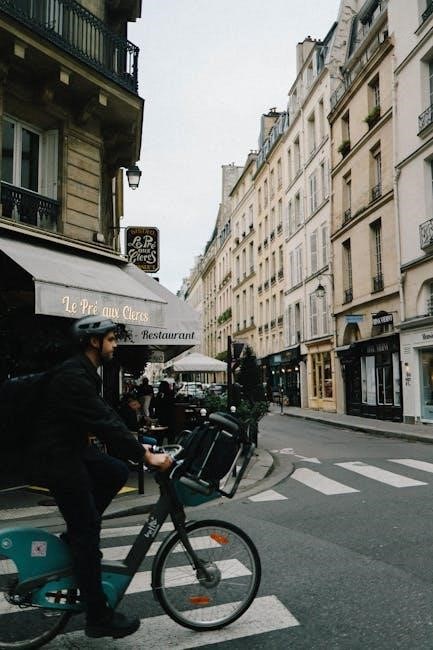Self-guided bicycle tours in Europe offer a unique way to explore diverse landscapes, cultures, and cuisines at your own pace. Perfect for independent travelers, these tours provide flexibility, allowing cyclists to create personalized journeys through iconic destinations like France, Italy, and Spain. With scenic routes, historic landmarks, and cycle-friendly infrastructure, self-guided tours are an ideal choice for adventurers seeking unforgettable experiences.
What Are Self-Guided Bicycle Tours?
Self-guided bicycle tours are independent cycling experiences where you ride at your own pace, following pre-planned routes. These tours are designed for travelers who prefer autonomy and flexibility. Unlike guided tours, there’s no group or leader, allowing you to explore freely. Typically, tour operators provide support, such as pre-booked accommodations, route maps, and luggage transfers, but you are responsible for your daily journey. This format is ideal for those who enjoy self-reliance and want to immerse themselves in local cultures and landscapes without a set schedule. It’s a great way to experience Europe’s diverse regions, from scenic countryside to historic cities, at your own rhythm.
Why Choose a Self-Guided Tour?
Choosing a self-guided tour offers unparalleled flexibility and freedom, allowing you to dictate your pace and itinerary. Without the constraints of a group, you can linger at scenic spots, explore hidden gems, or take rest days as needed. This independence is perfect for travelers who value autonomy and personalized experiences. Additionally, self-guided tours often provide excellent value, as they eliminate the cost of a guide while still offering support like pre-booked accommodations and route planning. They cater to various cycling preferences, whether you’re seeking challenging routes or leisurely rides, making them an ideal choice for diverse adventurers exploring Europe’s rich landscapes and cultures.

Benefits of Self-Guided Bicycle Tours
Self-guided bicycle tours in Europe offer flexibility, cost-effectiveness, and a personalized experience. They allow cyclists to explore diverse landscapes and cultures independently, creating memorable adventures tailored to their preferences.
Flexibility and Freedom
Self-guided bicycle tours in Europe provide unparalleled flexibility and freedom, allowing cyclists to set their own pace and itinerary. Without the constraints of a group schedule, riders can choose when and where to stop, enabling deeper exploration of local attractions and hidden gems. This independence fosters a more personal connection with the surroundings, making each journey unique. Whether it’s lingering at a scenic viewpoint or deviating from the planned route, the freedom to adapt ensures a memorable and enriching experience tailored to individual preferences.
Cost-Effectiveness
Self-guided bicycle tours in Europe are often more cost-effective than guided tours, as they eliminate the expense of a professional guide. Cyclists can choose budget-friendly accommodations and dining options, allowing for greater control over spending. Many tour operators offer pre-booked packages that include route planning, luggage transfers, and accommodations, providing excellent value for money. This approach minimizes unexpected costs and ensures a well-organized journey without the premium price of a guided experience. Additionally, the flexibility to adjust daily expenses makes self-guided tours an attractive option for travelers seeking an affordable yet memorable adventure across Europe.
Personalized Experience
A self-guided bicycle tour in Europe offers a deeply personalized experience, allowing cyclists to craft a journey tailored to their preferences. Travelers can design their own route, choosing paths that align with their interests, whether it’s exploring historic villages, vineyards, or coastal trails. The freedom to set daily distances and stops enables a more intimate connection with the landscape and culture. Without the constraints of a group itinerary, cyclists can linger at charming cafes, engage with locals, or discover hidden gems. This flexibility fosters a unique, enriching adventure where every moment is shaped by personal curiosity and the joy of exploration.
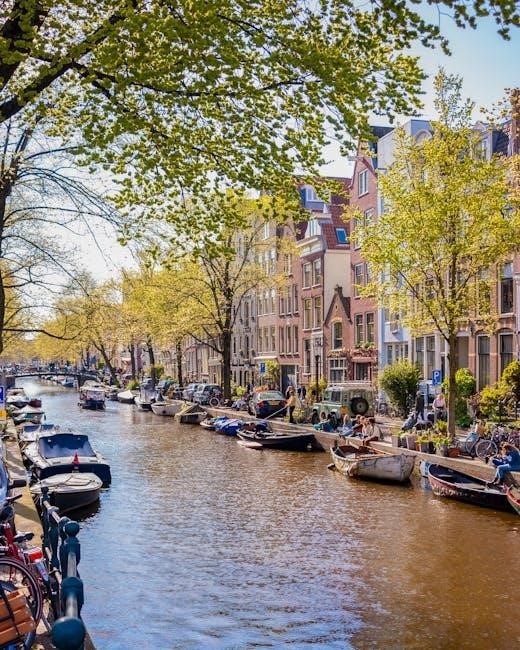
Popular Destinations for Self-Guided Bicycle Tours in Europe
Explore iconic routes like France’s Loire Valley, Italy’s Tuscany, and Spain’s coastal trails. Discover scenic landscapes, cultural landmarks, and charming villages on a self-guided adventure across Europe.
France: Famous Routes and Scenic Landscapes
France is a top destination for self-guided bicycle tours, offering iconic routes like the Loire Valley, known for its stunning châteaux and picturesque bike paths. Cyclists can explore the rolling countryside, charming villages, and vineyards of regions like Burgundy and Provence. The Dordogne River Valley provides breathtaking scenery, while the Alps and Pyrenees offer challenging climbs with panoramic mountain views. France’s well-marked cycling trails and bike-friendly infrastructure make it easy to navigate. Whether you’re enjoying a croissant in a quaint café or sipping wine in a vineyard, France’s rich culture and landscapes create an unforgettable cycling experience.
Italy: Cycling Through Tuscany and Beyond
Italy offers a diverse and enchanting experience for self-guided bicycle tours, with Tuscany being a standout destination. Cyclists can meander through rolling hills, vineyards, and medieval villages, soaking in the region’s timeless beauty. The Chianti wine region and cypress-lined roads provide iconic scenery. Beyond Tuscany, the Amalfi Coast captivates with its dramatic cliffs and Mediterranean views, while the Dolomites present challenging yet breathtaking mountain routes. Italy’s rich history and culture are evident in its Renaissance cities, charming piazzas, and world-class art. Indulge in pasta, pizza, and gelato as you explore this cycling paradise, where every pedal stroke reveals a new Italian treasure.
Spain: Exploring Coastal and Inland Routes
Spain’s self-guided bicycle tours offer a vibrant blend of coastal beauty and inland charm. Cyclists can explore the Mediterranean coastline, where golden beaches and charming fishing villages await. The Camino de Santiago, a historic pilgrimage route, attracts cyclists seeking cultural and spiritual experiences. Inland, the rolling hills of Andalusia and the rugged Pyrenees provide challenging yet rewarding terrain. Spain’s diverse landscapes, from sun-drenched plains to mountainous regions, cater to all cycling preferences. With its rich history, vibrant cities, and delicious cuisine, Spain is a cyclist’s paradise, offering unforgettable adventures on two wheels.
Austria and Germany: Danube Cycle Path
The Danube Cycle Path, spanning across Austria and Germany, is one of Europe’s most popular self-guided cycling routes. This scenic path follows the Danube River, offering stunning views of riverside landscapes, charming villages, and historic cities like Passau and Vienna. Cyclists enjoy well-marked trails, gentle terrain, and a mix of cultural and natural attractions. The route is ideal for all skill levels, with family-friendly sections and opportunities to explore castles, monasteries, and vineyards. Riders can savor local cuisine and wines, making this tour a perfect blend of adventure and cultural immersion. The Danube Cycle Path is a must-experience for any European cycling enthusiast.
Netherlands and Belgium: Flat Terrain and Cycle-Friendly Infrastructure
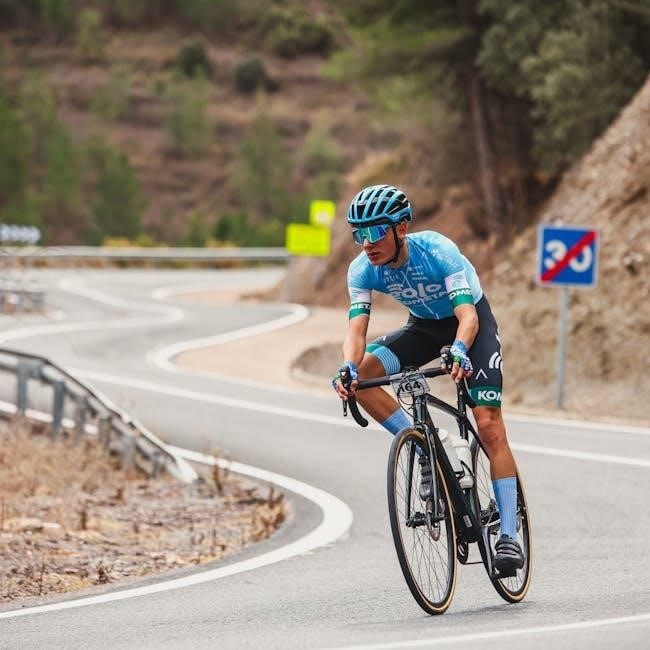
The Netherlands and Belgium offer some of Europe’s most cyclist-friendly landscapes, with flat terrain and exceptional infrastructure. The Netherlands is renowned for its vast network of dedicated bike paths, making it a cyclist’s paradise. Riders can glide past iconic windmills, quaint villages, and vibrant cities like Amsterdam and Utrecht. Belgium, particularly Flanders, boasts similarly flat routes, with scenic countryside and medieval towns. Both regions feature well-marked trails and bike-friendly policies, ensuring a smooth and enjoyable journey. These destinations are perfect for self-guided tours, allowing cyclists to explore at their own pace and immerse themselves in the local culture and history.
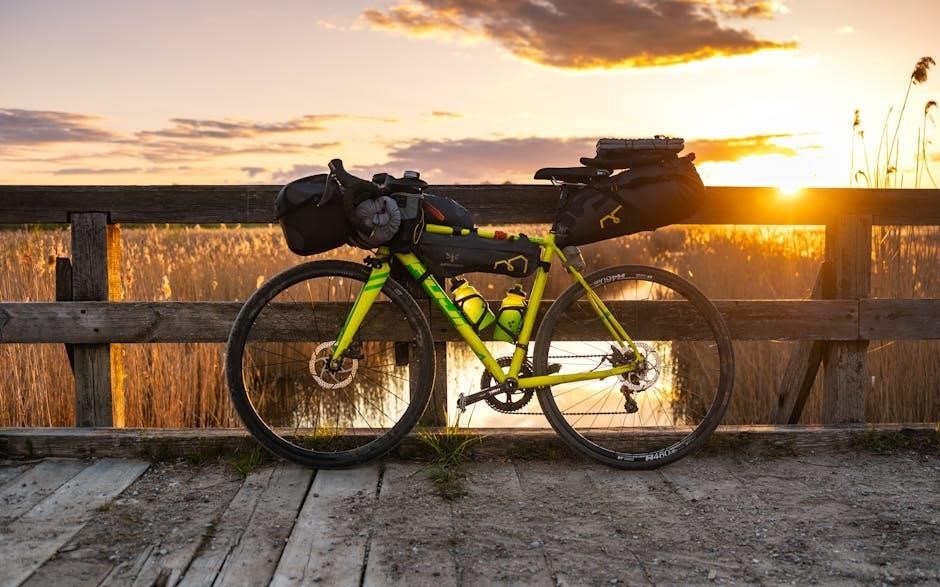
Planning Your Self-Guided Bicycle Tour
Planning a self-guided bicycle tour involves selecting routes, creating itineraries, and booking accommodations. Research destinations, understand local cycling laws, and ensure you’re prepared for the adventure.
Choosing the Right Route
Choosing the right route for your self-guided bicycle tour in Europe is crucial for an enjoyable experience. Consider your fitness level, interests, and the terrain you prefer. Popular options include the Danube Cycle Path, which spans Austria and Germany, offering scenic views and cultural stops. For a mix of coastal and inland routes, Spain provides diverse landscapes, from beaches to mountains. France and Italy are renowned for their iconic routes, such as the Loire Valley and Tuscany, where you can immerse yourself in history and cuisine. Research route difficulty, road conditions, and attractions to ensure it aligns with your preferences.
Creating a Realistic Itinerary
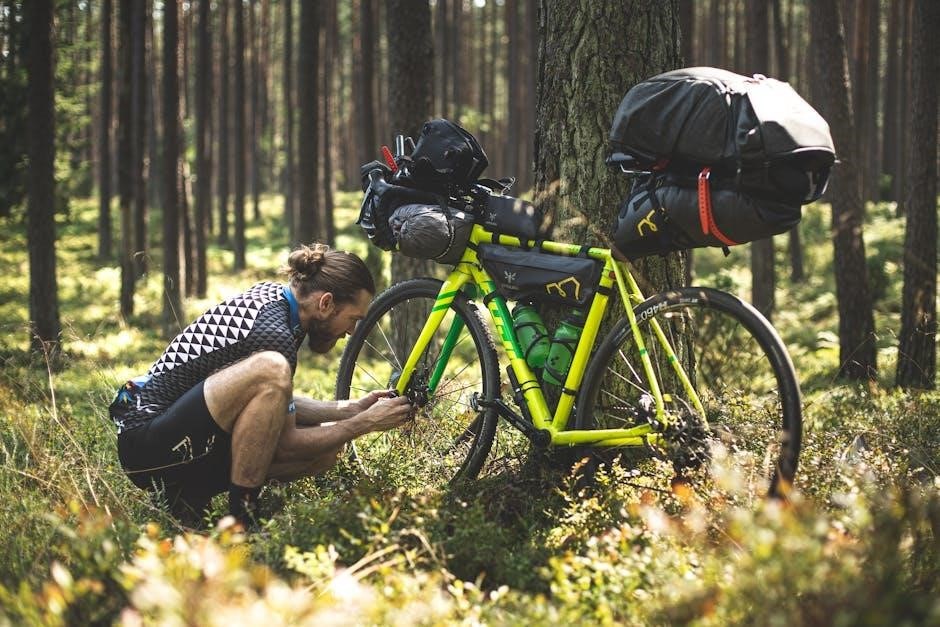
Creating a realistic itinerary is key to enjoying your self-guided bicycle tour in Europe. Balance cycling time with sightseeing and relaxation to avoid burnout. Consider your fitness level and terrain difficulty when estimating daily distances. For example, experienced cyclists might aim for 40-60 miles per day, while casual riders should start with shorter distances. Include rest days to explore local attractions or recover. Plan accommodations in advance, especially during peak travel seasons. Use digital route-planning tools to map your journey and ensure a smooth experience. A well-structured itinerary allows you to maximize your adventure while maintaining flexibility to embrace spontaneous moments along the way.
Booking Accommodations Along the Way
Booking accommodations in advance is essential for a smooth self-guided bicycle tour in Europe, especially during peak travel seasons. Choose hotels, guesthouses, or bike-friendly lodgings near your route to minimize extra cycling. Consider facilities that offer secure bike storage and basic maintenance tools. Online platforms and travel agencies specializing in cycling tours can help you find suitable options. Ensure your accommodations align with your budget and preferences, whether you prefer luxury stays or cozy bed-and-breakfasts. Flexibility is key, as unexpected changes in your itinerary may require adjustments. Pre-booking accommodations ensures peace of mind and allows you to focus on enjoying your cycling adventure.
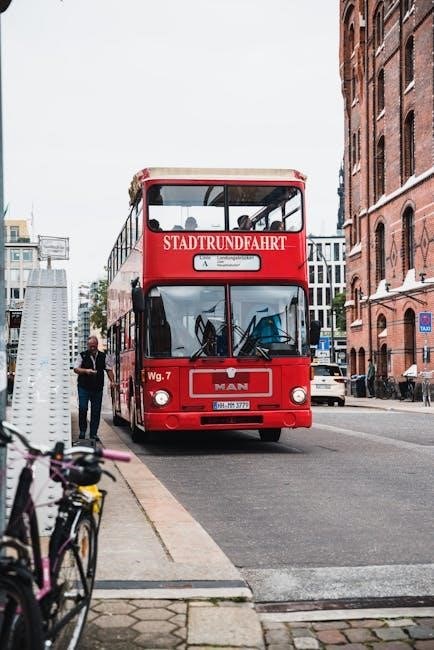
Preparation for a Self-Guided Tour
Preparation is key to a successful self-guided bicycle tour in Europe. Research routes, train physically, and gather essential gear like a reliable bike, tools, and safety equipment. Plan ahead, understand local cycling laws, and pack wisely to ensure a smooth journey and enjoyable experience. Proper preparation allows you to focus on the adventure and make the most of your time exploring Europe’s diverse landscapes and cultures. Being well-prepared enhances safety, comfort, and overall satisfaction, making your self-guided tour a memorable experience.
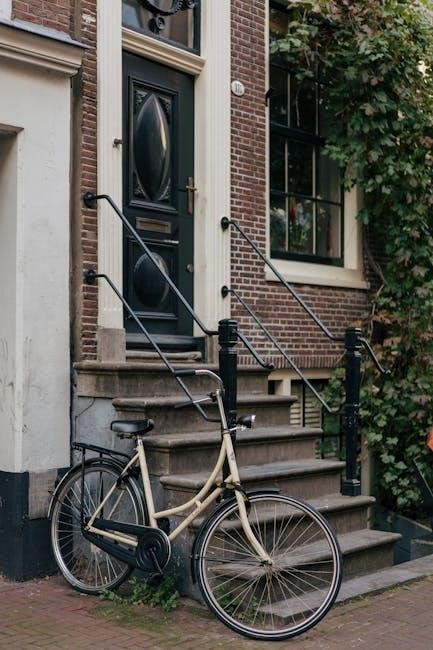
Physical Conditioning and Training
Physical conditioning is crucial for a successful self-guided bicycle tour in Europe. Start training several months in advance to build endurance and strength. Aim for regular rides of varying distances to adapt to the demands of cycling long miles. Incorporate hill climbs to prepare for diverse terrains, especially if planning to explore hilly regions like Tuscany or Spain. Rest days are equally important to avoid overtraining. A well-structured training plan ensures you can enjoy the journey without fatigue. Proper conditioning allows you to fully immerse in the scenic views and cultural experiences Europe has to offer, making your adventure both rewarding and memorable.
Essential Gear and Equipment
A well-prepared cyclist ensures a smooth and enjoyable journey. Start with a reliable bicycle, whether road, mountain, or e-bike, depending on the terrain. Essential accessories include a helmet, lights, reflectors, and a bike lock. A comfortable saddle and padded shorts are must-haves for long rides. Carry a basic toolkit with a pump, spare tubes, and a multi-tool for repairs. Navigation tools like a GPS device or a smartphone app are vital for route-finding. Pack lightweight, water-resistant panniers or a backpack for your gear. Don’t forget water bottles, a first-aid kit, and a portable charger. Proper gear ensures you’re ready for any adventure Europe offers.
Understanding Local Cycling Laws and Etiquette
Understanding local cycling laws and etiquette is crucial for a smooth and respectful journey. Always follow traffic rules, such as stopping at red lights and riding in designated bike lanes. Be mindful of pedestrian paths and shared spaces, yielding to walkers when necessary. Familiarize yourself with hand signals and local cycling customs. In many European countries, cyclists must wear helmets and use reflective gear. Respect road signs and markings, and never cycle under the influence of alcohol. By adhering to these guidelines, you ensure safety and harmony with local communities, enhancing your overall cycling experience in Europe.
Packing Tips for a Comfortable Journey
Packing wisely is essential for a comfortable self-guided bicycle tour in Europe. Bring lightweight, breathable clothing suitable for varying weather conditions, including waterproof gear. Choose padded cycling shorts for comfort during long rides. Include sturdy cycling shoes, gloves, and a helmet for safety. Pack a basic tool kit with a spare tube, tire levers, and a multi-tool. Don’t forget a water bottle, phone mount, and portable charger. Consider a small first-aid kit and travel documents. Opt for a lightweight, water-resistant pannier or backpack to carry essentials securely. Pack layers for cooler mornings and evenings, ensuring versatility for diverse European climates and terrains.
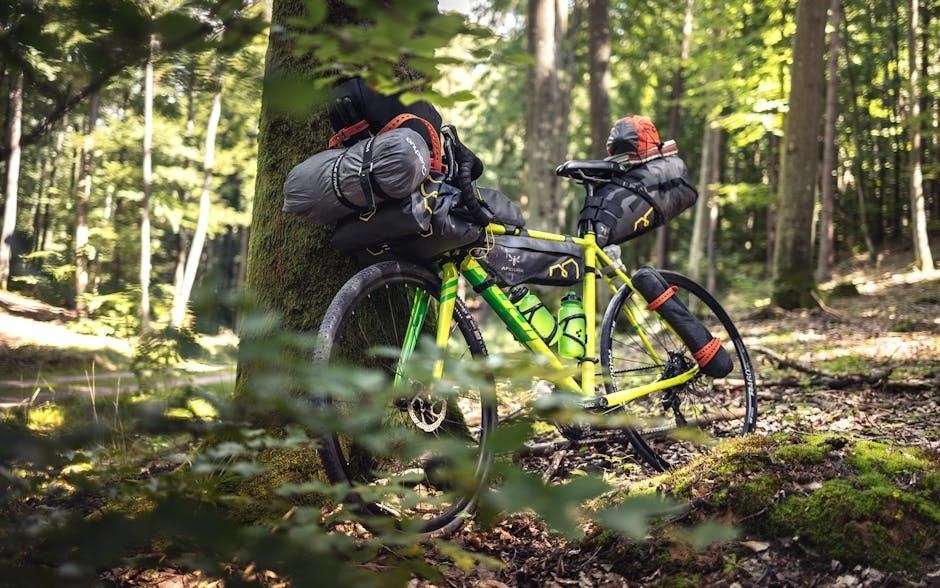
Safety Tips for Self-Guided Cycling in Europe
Always wear a helmet, stay visible with reflective gear, and follow local cycling laws. Carry a basic tool kit, know how to fix a flat tire, and stay alert on the road for a safe and enjoyable journey.
Navigation and Route-Finding
Navigation is crucial for a smooth self-guided cycling experience in Europe. Use GPS devices, downloaded maps, or detailed route notes provided by tour operators. Carry a physical map as a backup. Many European cycling routes are well-marked, but it’s essential to stay vigilant, especially in rural areas. Familiarize yourself with local signage and symbols to avoid getting lost. Download apps like Komoot or Ride with GPS for real-time directions and elevation profiles. Always double-check your route before starting the day. If unsure, ask locals for assistance. Proper planning and reliable tools will help you stay on track and enjoy the journey.
Dealing with Emergencies and Repairs
Preparedness is key for handling emergencies and repairs during self-guided bicycle tours in Europe. Carry a basic toolkit, spare tubes, and a pump or CO2 cartridges to fix common issues like punctures. Know how to repair a flat tire, as this is the most frequent problem. Bring a multi-tool for adjusting brakes and gears. Research local bike shops along your route for more complex repairs. Keep emergency contacts, such as your tour operator or a local assistance service, handy. Stay calm and resourceful, as most issues can be resolved with the right tools and knowledge. Always have a backup plan and a way to communicate.
Staying Visible and Safe on the Road
Staying visible and safe is paramount during self-guided bicycle tours in Europe. Wear high-visibility clothing and ensure your bike has front and rear lights, especially for early morning or evening rides. Always follow local traffic laws and cycle defensively, anticipating the actions of drivers and pedestrians. Use designated bike lanes or paths when available, as they are designed to enhance cyclist safety. Be cautious at intersections and roundabouts, where accidents are more likely to occur. Carry a first-aid kit and a phone for emergencies. Regularly check your bike’s condition to prevent mechanical failures. Stay alert and avoid distractions while cycling.
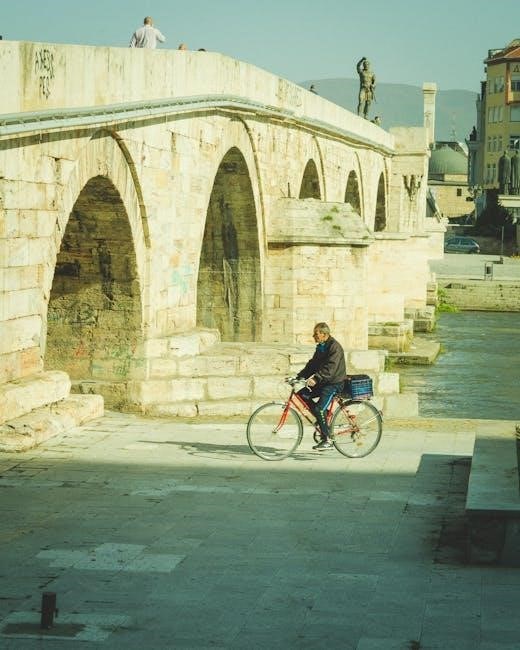
Tips for a Successful Self-Guided Tour
Plan meticulously, embrace local cultures, and remain flexible. Carry essentials like maps, tools, and snacks. Engage with locals for authentic experiences and enjoy the journey without strict timelines.
Embracing Local Culture and Cuisine
Self-guided bicycle tours offer a unique opportunity to immerse yourself in Europe’s rich cultural heritage and savor its diverse cuisine. As you pedal through villages, stop at local cafes to enjoy regional specialties and engage with friendly locals. Indulge in fresh produce from markets, wine tastings, or artisanal foods, enhancing your journey with authentic flavors. Don’t miss historic festivals or seasonal events, which add vibrant color to your adventure. By embracing the local way of life, you create unforgettable memories and deepen your connection to the regions you explore, making your tour a true cultural and culinary adventure.
Managing Time and Distances
Effectively managing time and distances is crucial for a self-guided bicycle tour in Europe. Plan realistic daily mileages considering terrain, stops, and sightseeing. Use GPS or maps to track progress and adjust plans as needed. Balance cycling with exploration, ensuring ample time for cultural experiences. Prioritize must-see attractions while allowing flexibility for spontaneous discoveries. Avoid overpacking your itinerary to maintain a relaxed pace and enjoy the journey. Regular breaks and hydration are essential for stamina. By balancing time and distance, you maximize enjoyment and create lasting memories of your European adventure.
Troubleshooting Common Issues
- Flat tires are common; carry a repair kit and know how to fix them.
- Navigation issues? Use GPS devices or detailed maps as backups.
- Mechanical problems? Basic tools and emergency contacts can resolve most issues.
- Weather unpredictability? Pack versatile clothing and plan flexible routes.
- Accommodation problems? Book in advance and have backup options.
Stay calm, resourceful, and prepared to handle these challenges, ensuring your tour remains enjoyable and stress-free.
Self-guided bicycle tours in Europe offer unparalleled freedom and personal growth, allowing cyclists to immerse themselves in stunning landscapes and rich cultures at their own pace.
Final Thoughts on Self-Guided Tours
Self-guided bicycle tours in Europe embody the essence of freedom and personalization, offering cyclists the chance to explore iconic destinations at their own pace. These tours cater to diverse preferences, whether you seek challenging routes or leisurely rides through scenic landscapes. The ability to craft a tailored itinerary allows for authentic cultural immersion and unforgettable experiences. Embrace the thrill of navigating historic trails, savoring local cuisine, and connecting with fellow travelers. With proper planning and preparation, a self-guided tour becomes a transformative adventure, blending physical challenge with emotional fulfillment. Start your journey today and create lifelong memories across Europe’s captivating landscapes.
Encouragement to Start Planning Your Adventure
Embark on a self-guided bicycle tour in Europe and unlock a world of freedom and adventure. Whether you’re drawn to iconic routes like the Danube Cycle Path or the charming countryside of Tuscany, every pedal stroke brings new discoveries. With the flexibility to craft your own itinerary, you can immerse yourself in local cultures, savor delicious cuisine, and connect with fellow cyclists. Don’t wait—start planning your journey today! Europe’s diverse landscapes and cycle-friendly infrastructure make it the perfect destination for an unforgettable experience. Gather your gear, map out your route, and get ready to create lifelong memories on two wheels.
